Testing
LLMOps Concepts

Max Knobbout, PhD
Applied Scientist, Uber
LLM lifecyle: Testing
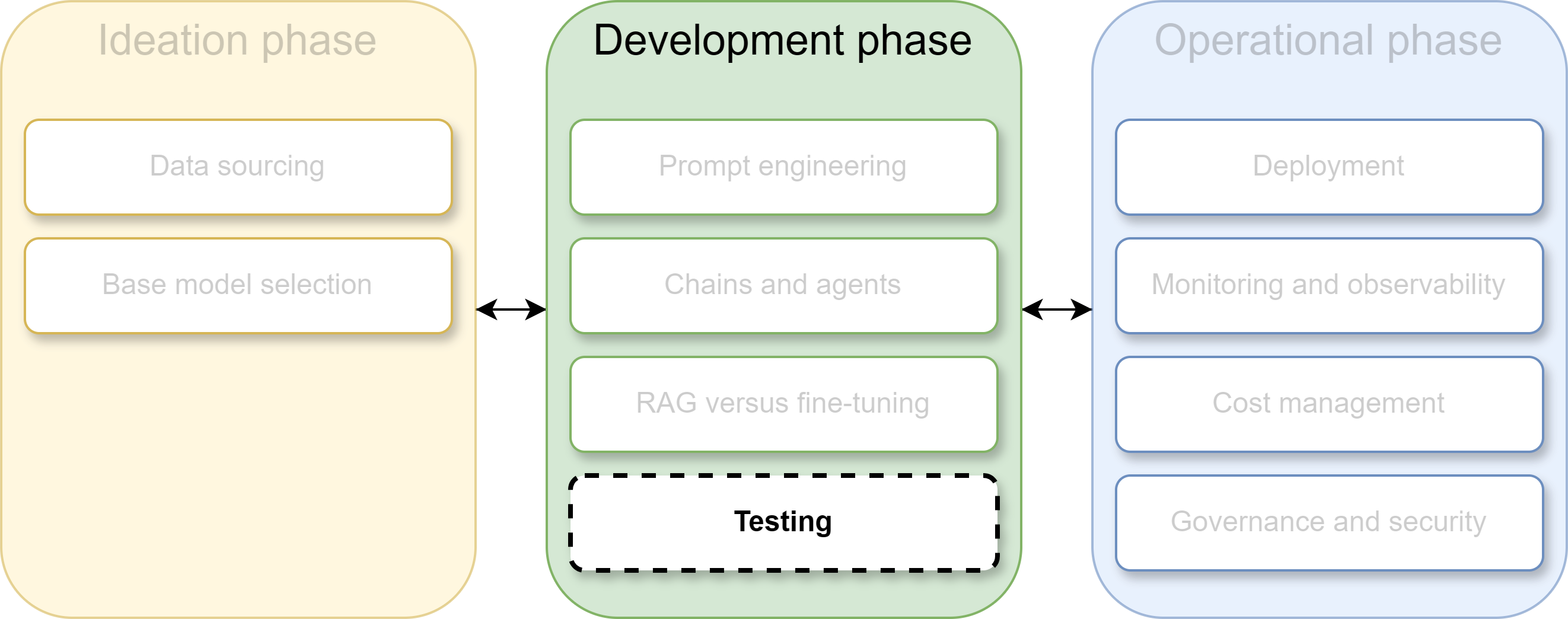
Why do we need to test?
![]()
- LLMs make mistakes
- Testing is vital for assessing the application's readiness for deployment
- We will address evaluating the output
Traditional ML versus LLM application testing
Traditional supervised machine learning:
- Need labeled train and test data
- Metrics focusing on accuracy or closeness to target
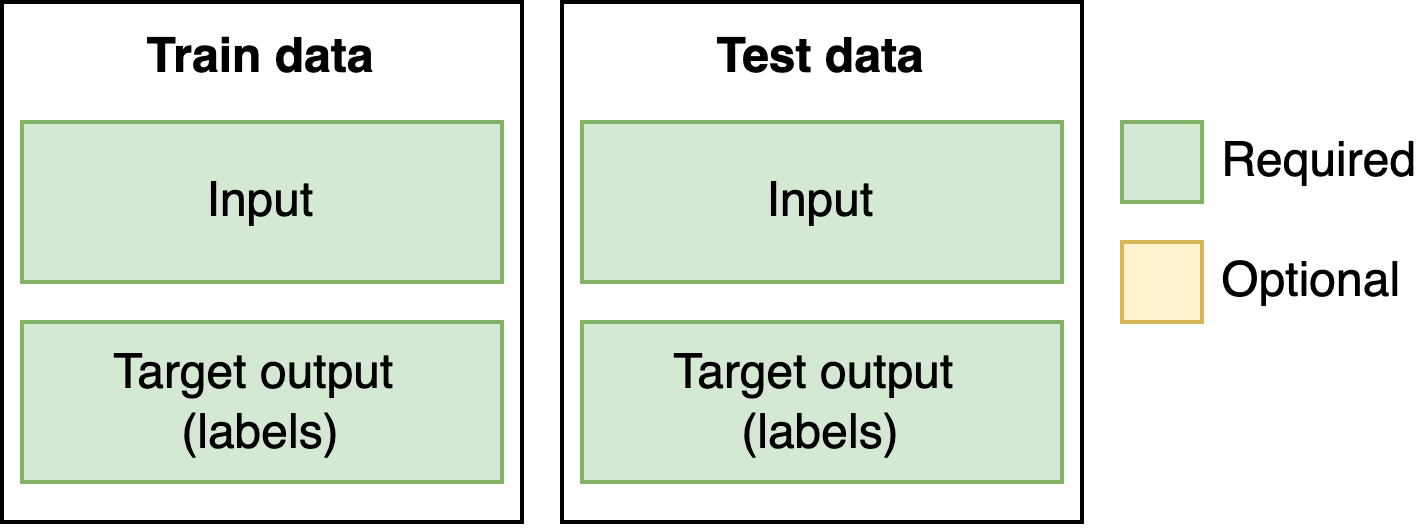
LLM applications:
- Need test data, not necessarily labeled
- Quality of output using a variety of metrics
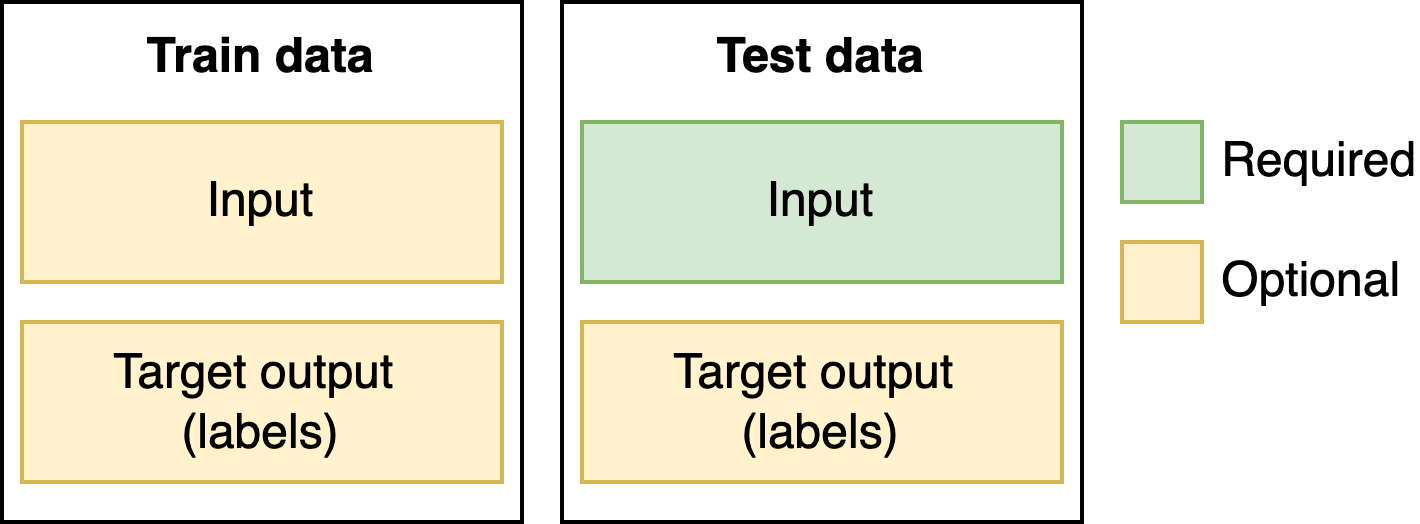
Step 1: Building a test set
![]()
- Building the test set should now be completed
- Test data must closely resemble real-world scenarios
- Various tools can help us in this process
Step 2: Choosing our metric
If there is a correct answer...
- ... use machine learning metrics. Example:
- Accuracy
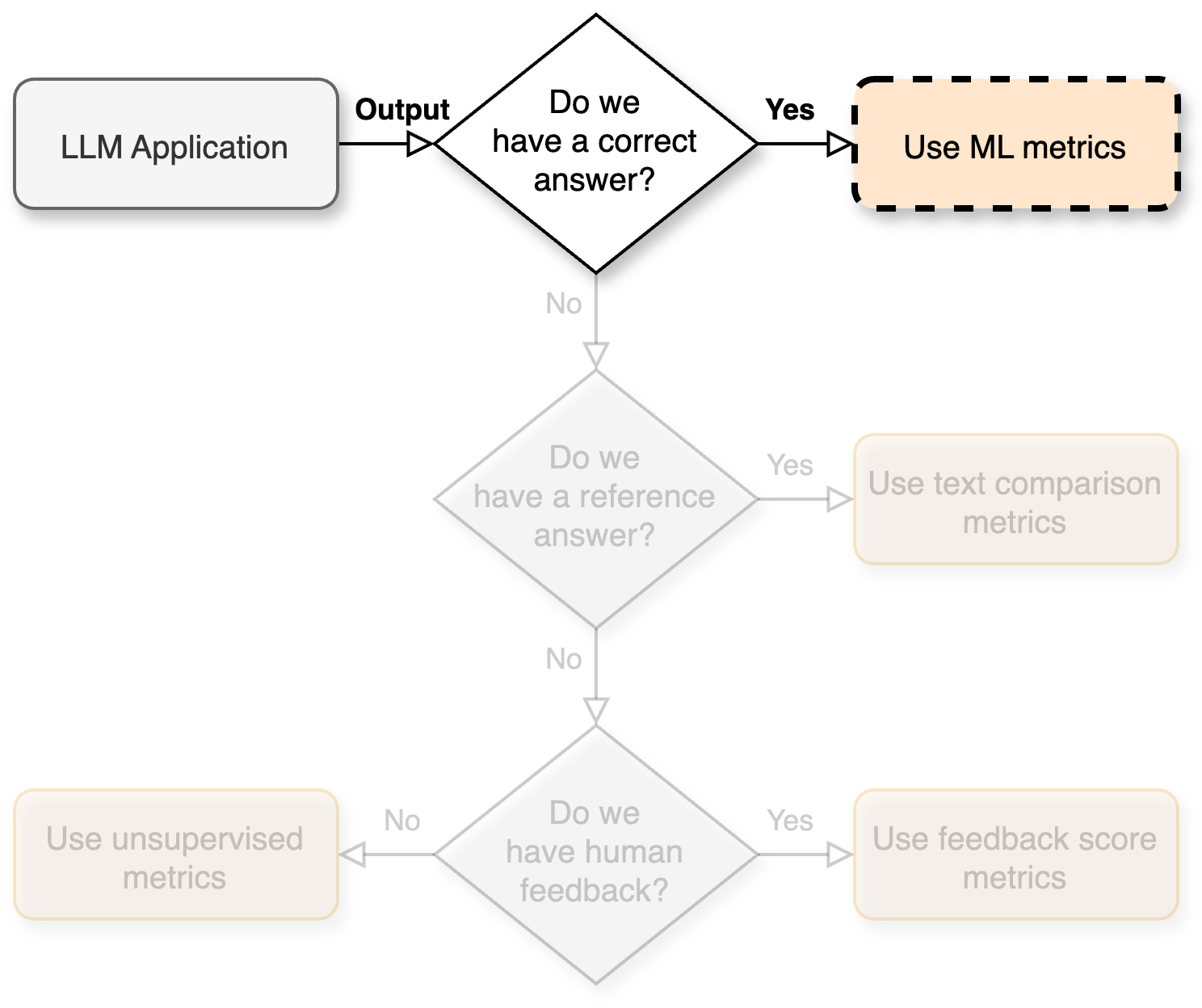
Step 2: Choosing our metric
If there is a reference answer...
- ... use statistical methods.
- ... use model-based methods. Example:
- LLM judges
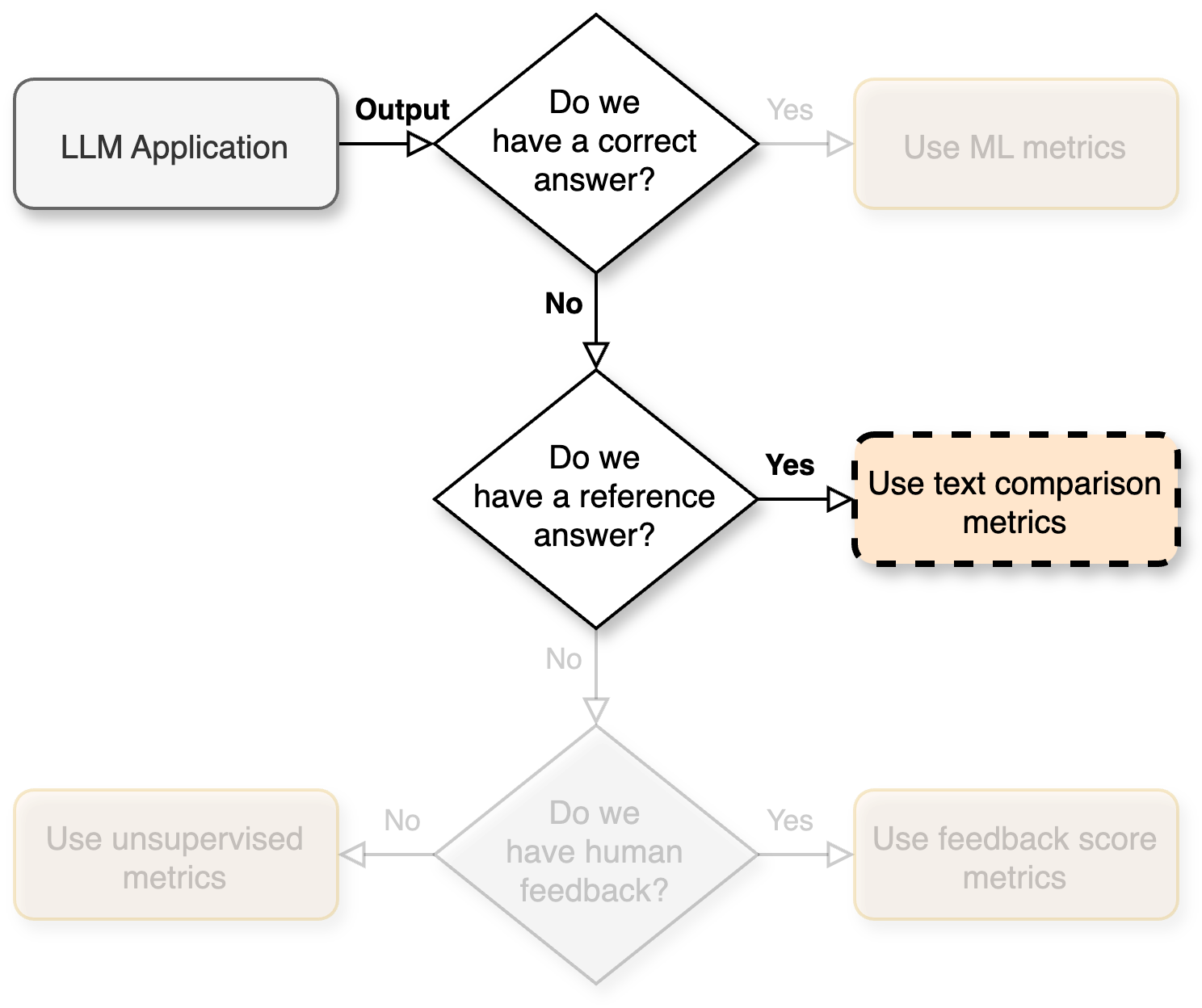
Step 2: Choosing our metric
If we have access to human feedback...
- ... let humans rate the text. Examples:
- Rate quality
- Rate relevance
- Rate coherence
- ... use model-based approach. Example:
- Predict rating based on past feedback
- Ask LLM judge if feedback was incorporated
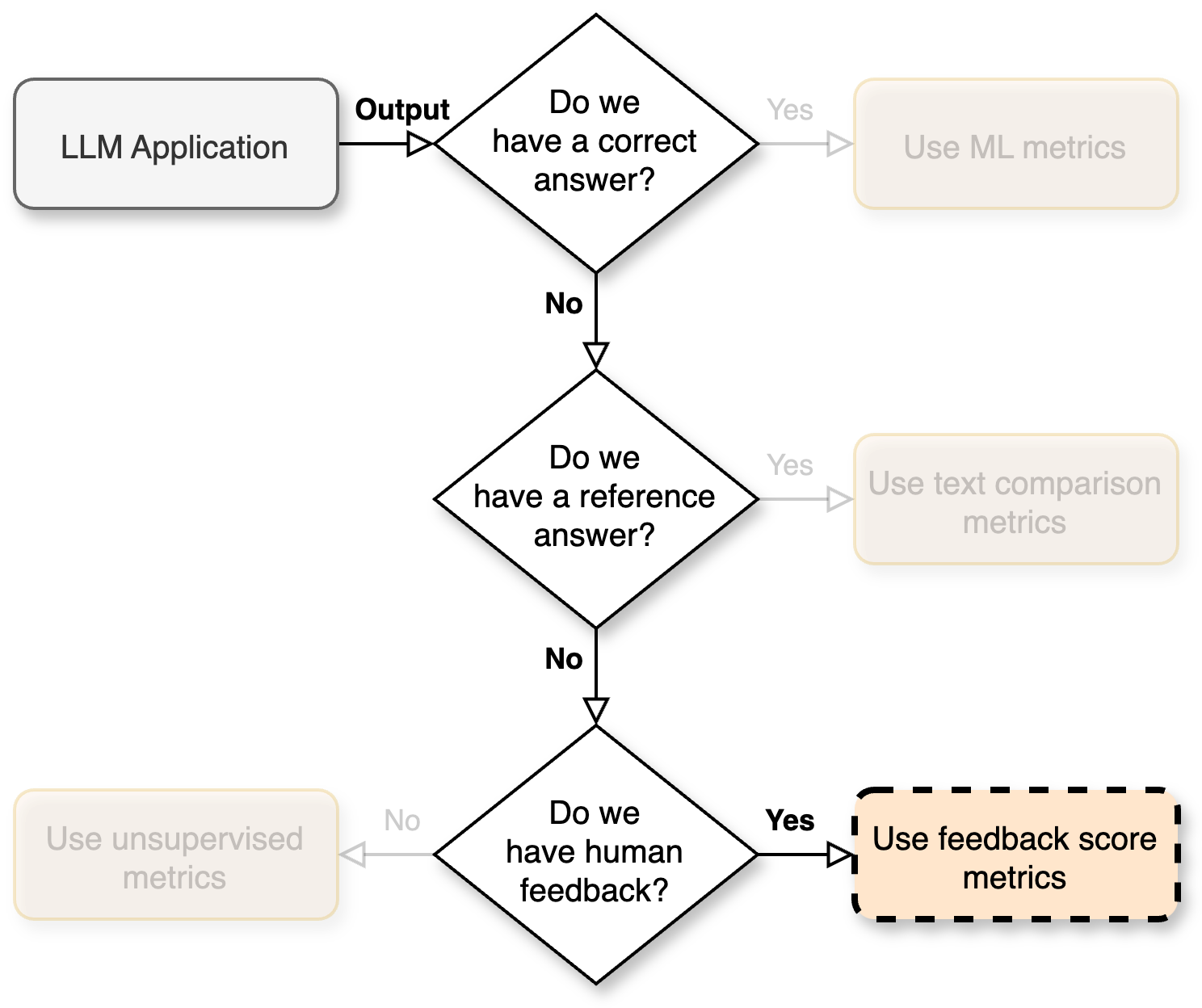
Step 2: Choosing our metric
If there's no human feedback...
- ... use unsupervised metrics. Examples:
- Coherence
- Fluency
- Diversity
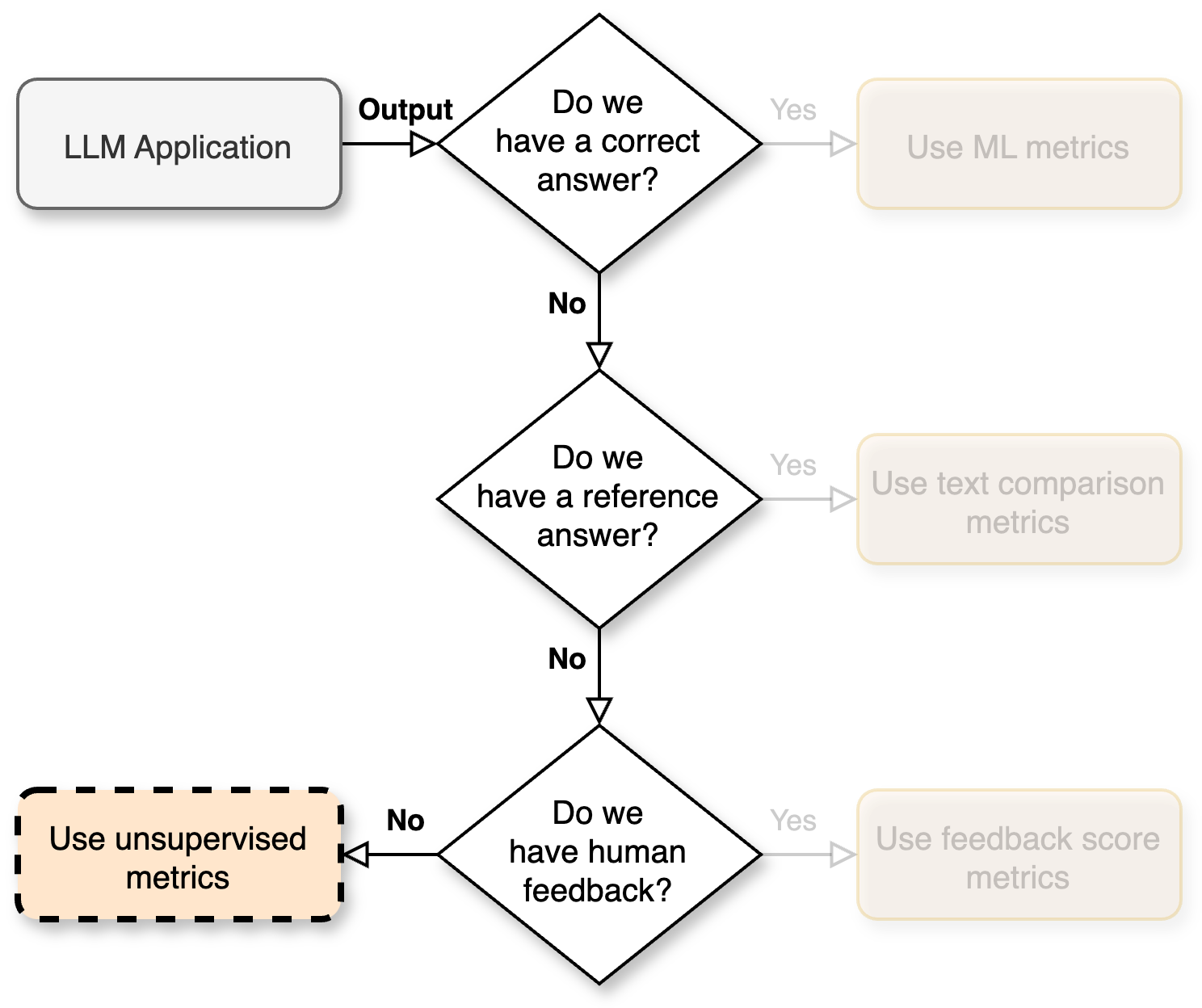
Step 3: Define optional secondary metrics
Output characteristics:
- 🎭 Bias
- ☠ Toxicity
- 🤝 Helpfulness
Operational characteristics:
- ⏱ Latency
- 💰 Total incurred cost
- 💻 Memory usage
The development cycle
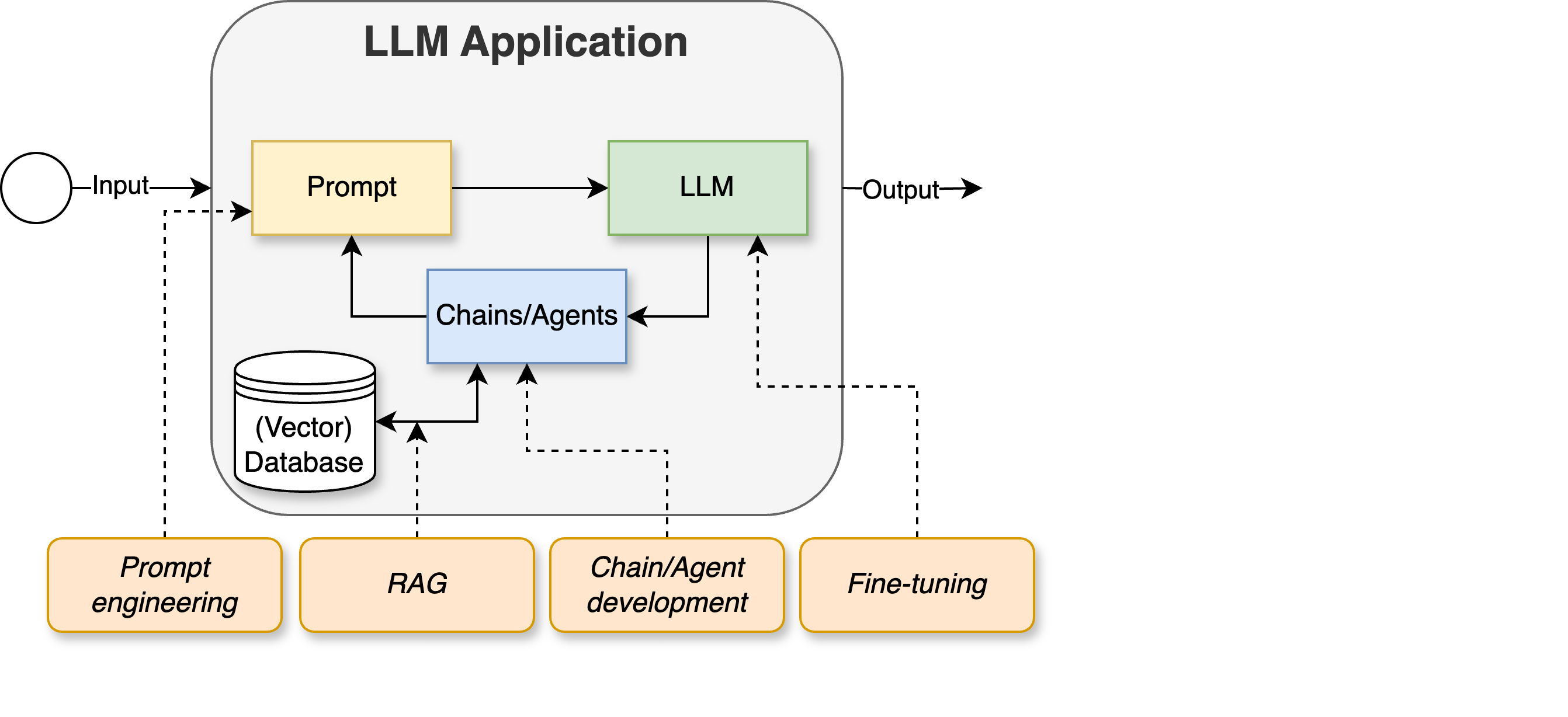
The development cycle
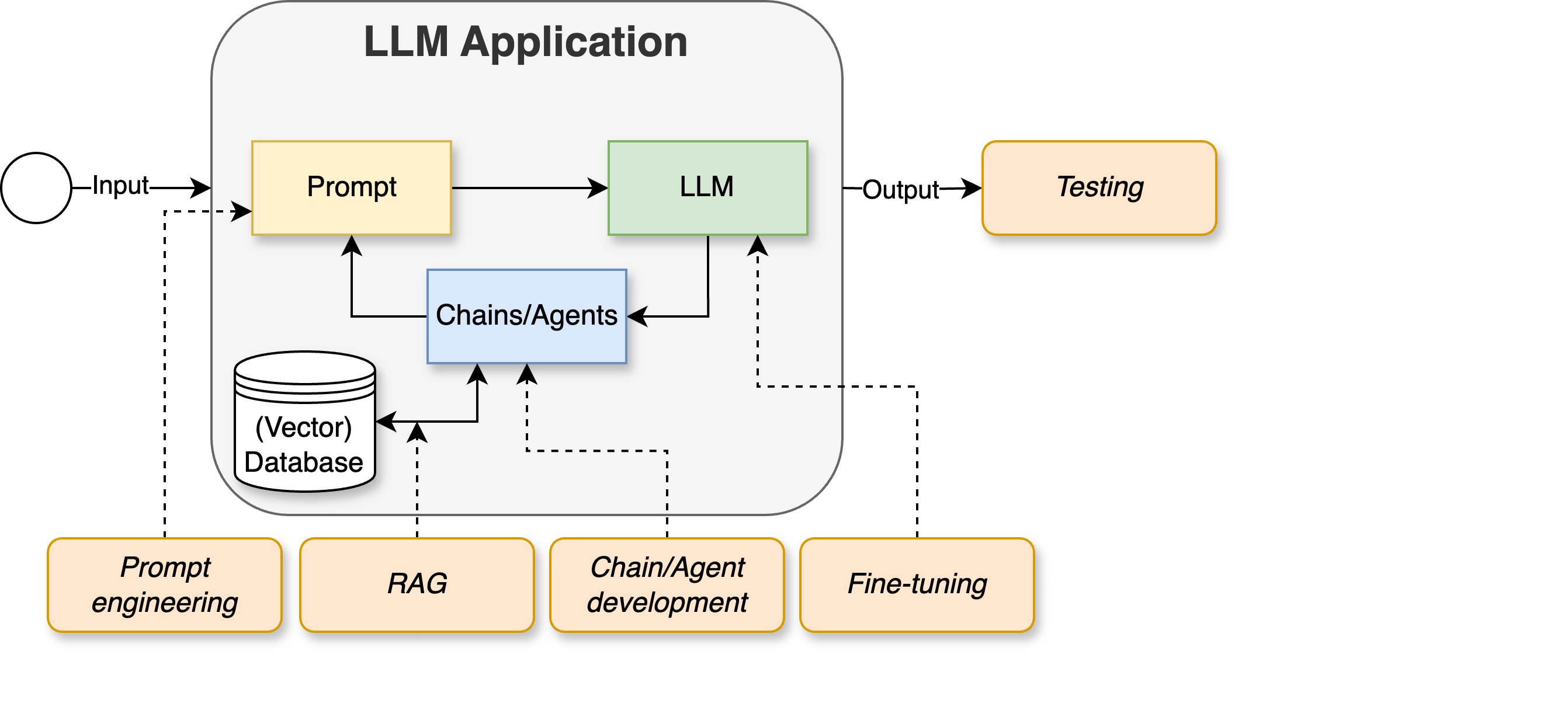
The development cycle
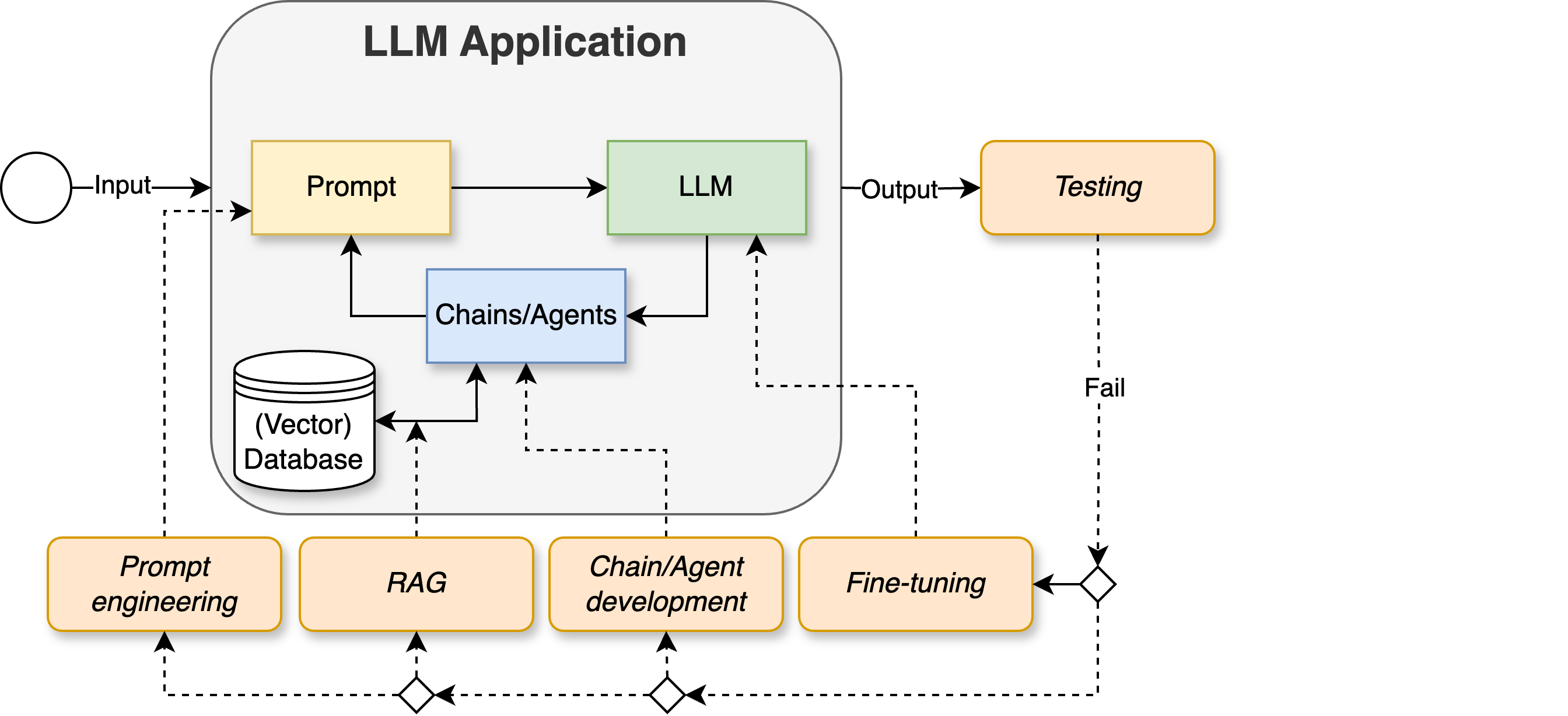
The development cycle
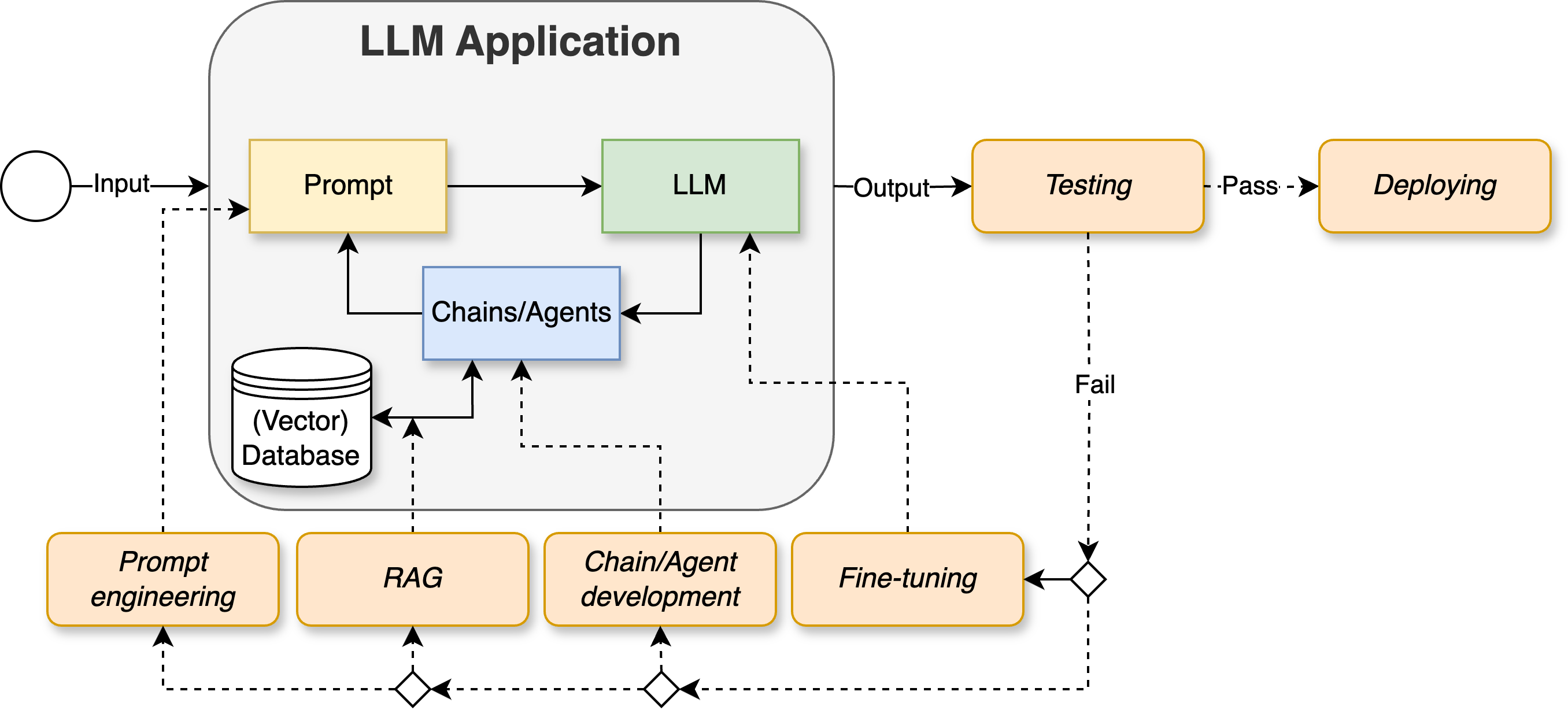
Let's practice!
LLMOps Concepts

